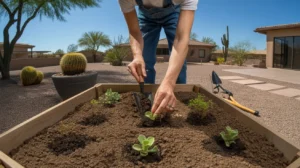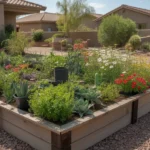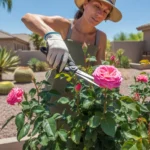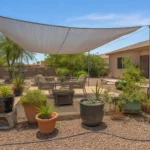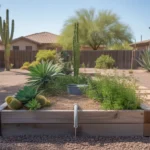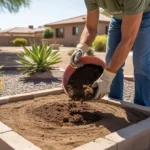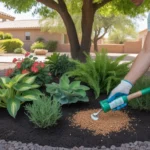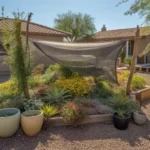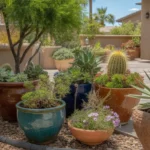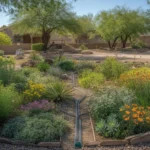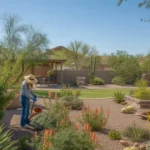Spring has sprung in Mesa, and it’s the perfect time for gardening newbies to roll up their sleeves and get their hands dirty. With our desert climate and unique soil conditions, it’s important to understand the basics of spring gardening to set your garden up for success. In this comprehensive guide, we’ll walk you through essential tips and techniques to help your Mesa garden thrive, from prepping your soil to choosing the right plants for our arid environment. Let’s dig in!
Assess and Prep Your Garden Beds
Before you start planting, take stock of your existing garden beds. Mesa’s soil tends to be heavy in clay and low in organic matter, which can make it challenging for plants to establish strong root systems. To give your garden a boost, consider adding in organic matter like compost, aged manure, or peat moss. This will help improve soil structure, drainage, and nutrient availability.
If you’re starting fresh, choose a spot that gets at least 6-8 hours of direct sunlight per day. Most vegetables and flowering annuals thrive in full sun conditions. Clear the area of any grass, rocks or debris, and loosen the soil to a depth of 12-18 inches using a garden fork or tiller. Mix in a 2-3 inch layer of organic matter, and your bed will be primed for planting.
For an extra kick of nutrients, you can also add a slow-release organic fertilizer according to package instructions. Look for blends formulated for desert soils, which will provide a steady supply of nutrients throughout the growing season without overwhelming your plants.
Choose Desert-Friendly Plants
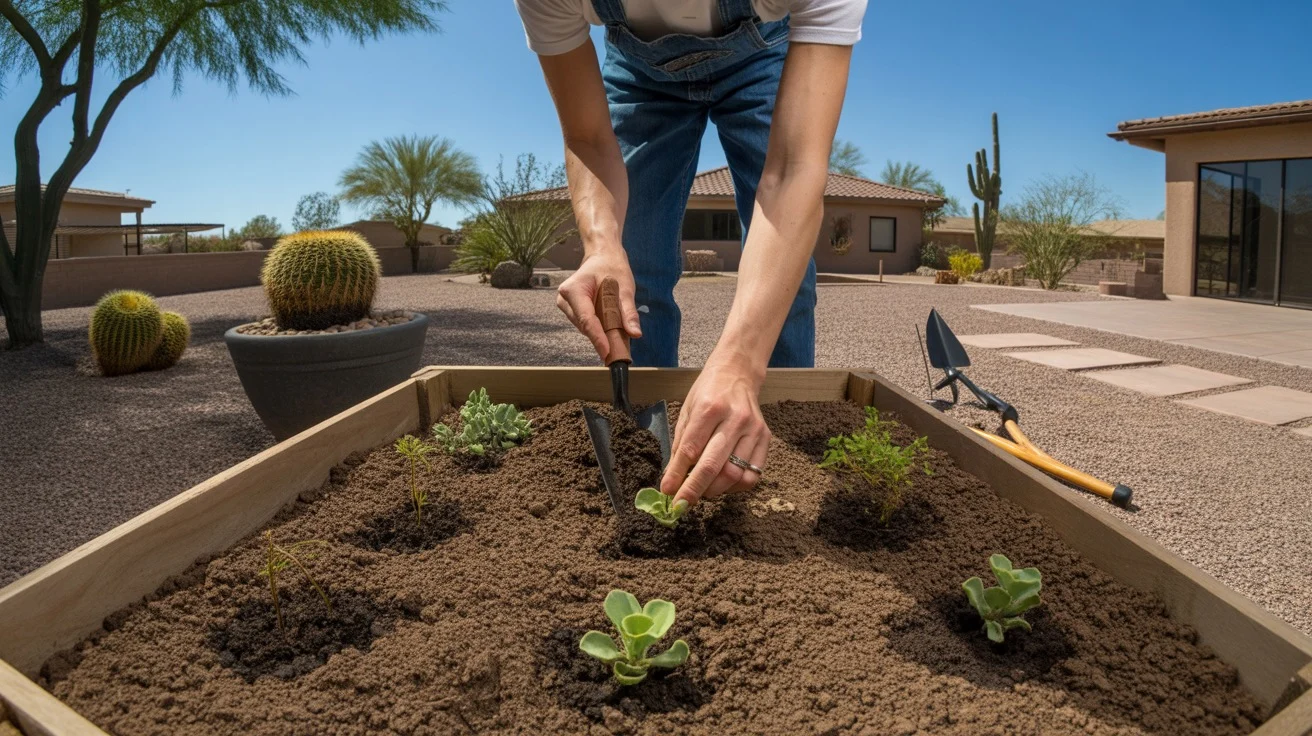
One of the keys to successful gardening in Mesa is selecting plants that are well-adapted to our hot, dry climate. Native and desert-adapted plants have evolved to thrive in arid conditions, making them excellent low-maintenance choices for beginning gardeners.
For a colorful, water-wise flower bed, consider options like penstemon, gaillardia, chuparosa, and desert marigold. These hardy perennials produce vibrant blooms while requiring minimal irrigation once established. Annual wildflowers like Mexican gold poppies, desert bluebells, and California poppies are also great choices that reseed themselves year after year.
If you’re eager to grow veggies, stick with varieties that can handle the heat. Tomatoes, peppers, eggplant, squash, and beans are all good bets for a spring planting. Look for varieties labeled as heat-tolerant or bred for desert conditions, like ‘Solar Fire’ tomatoes or ‘Desert’ squash. Herbs like rosemary, thyme, and oregano are also low-maintenance options that add fresh flavor to your cooking.
Plant at the Right Time
Timing is everything when it comes to spring planting in Mesa. Our last frost date typically falls in late February or early March, so it’s best to wait until mid-March or later to put most plants in the ground. Cool-season veggies like lettuce, peas, and brassicas can go in a bit earlier, but be prepared to protect them if a late cold snap hits.
When you’re ready to plant, aim to do so in the early morning or late afternoon to avoid the intense midday heat. Gently remove plants from their nursery pots, loosen the roots, and set them in the ground at the same depth they were growing previously. Water thoroughly after planting to settle the soil around the roots.
For seeds, follow the planting depth and spacing instructions on the packet. Most seeds can be sown directly in the garden once the soil has warmed up to around 60°F. Keep the soil evenly moist but not soggy until the seeds germinate and the seedlings have developed their first set of true leaves.
Water Wisely
With Mesa’s limited rainfall and intense summer heat, proper watering is crucial for a thriving garden. Most plants will need a deep watering 2-3 times per week during the spring months, depending on factors like soil type and weather conditions.
To conserve water and reduce evaporation, aim to water early in the morning before the day heats up. This gives plants time to absorb moisture before the sun is at its peak. Avoid overhead watering if possible, as wet foliage can be prone to fungal diseases. Instead, use a soaker hose, drip irrigation system, or watering wand to deliver moisture directly to the roots.
As plants become established, you can gradually reduce watering frequency while still providing a deep soak each time. A good rule of thumb is to water deeply and less often, which encourages plants to develop deeper, more drought-resistant root systems. Apply a 2-3 inch layer of organic mulch around plants to help retain soil moisture and regulate temperatures.
Manage Pests and Diseases
Even with proper care, pests and diseases can sometimes strike in the garden. Common culprits in Mesa include aphids, whiteflies, thrips, and spider mites. These sap-sucking insects can weaken plants and spread diseases, so it’s important to keep an eye out for signs of infestation like stippled or yellowing leaves.
If you do notice pests, start with the least toxic control methods first. A strong spray of water can knock many insects off of plants, while insecticidal soaps and neem oil can help control tougher infestations. Avoid using broad-spectrum insecticides, which can harm beneficial insects like ladybugs and lacewings that help keep pests in check.
Fungal diseases like powdery mildew and rust can also pop up in the spring garden, especially during periods of cool, damp weather. Planting disease-resistant varieties, spacing plants properly for good air circulation, and avoiding overhead watering can all help prevent these issues. If you do notice signs of disease, remove affected foliage and dispose of it in the trash rather than composting it.
Enjoy the Fruits of Your Labor
As your spring garden grows, take time to enjoy the fruits of your labor. Harvest veggies regularly to encourage plants to keep producing, and don’t be afraid to snip a few flowers for a beautiful bouquet. Gardening is a wonderful way to connect with nature, get some exercise, and enjoy fresh, homegrown produce.
Remember, even the most experienced gardeners face challenges and setbacks from time to time. Don’t get discouraged if a particular plant doesn’t thrive or if pests get the upper hand. Each season is an opportunity to learn, experiment, and grow as a gardener.
With these spring gardening tips for beginners in Mesa, you’ll be well on your way to cultivating a beautiful, bountiful garden that can withstand our unique desert conditions. So grab your gloves, soak up some sun, and get ready to enjoy the many rewards of gardening in the Valley of the Sun.

